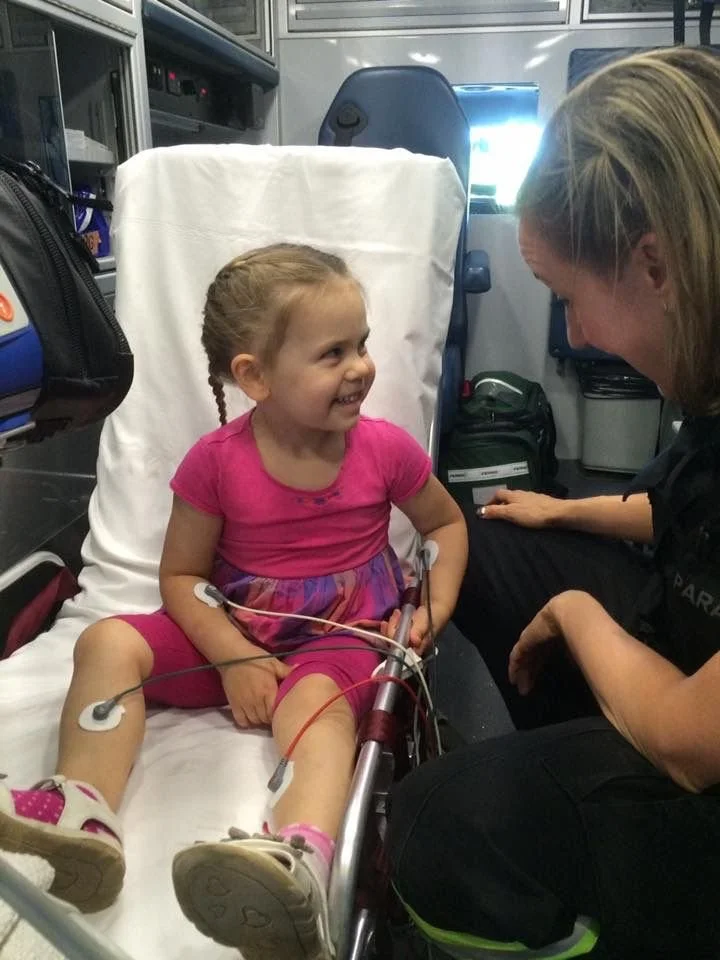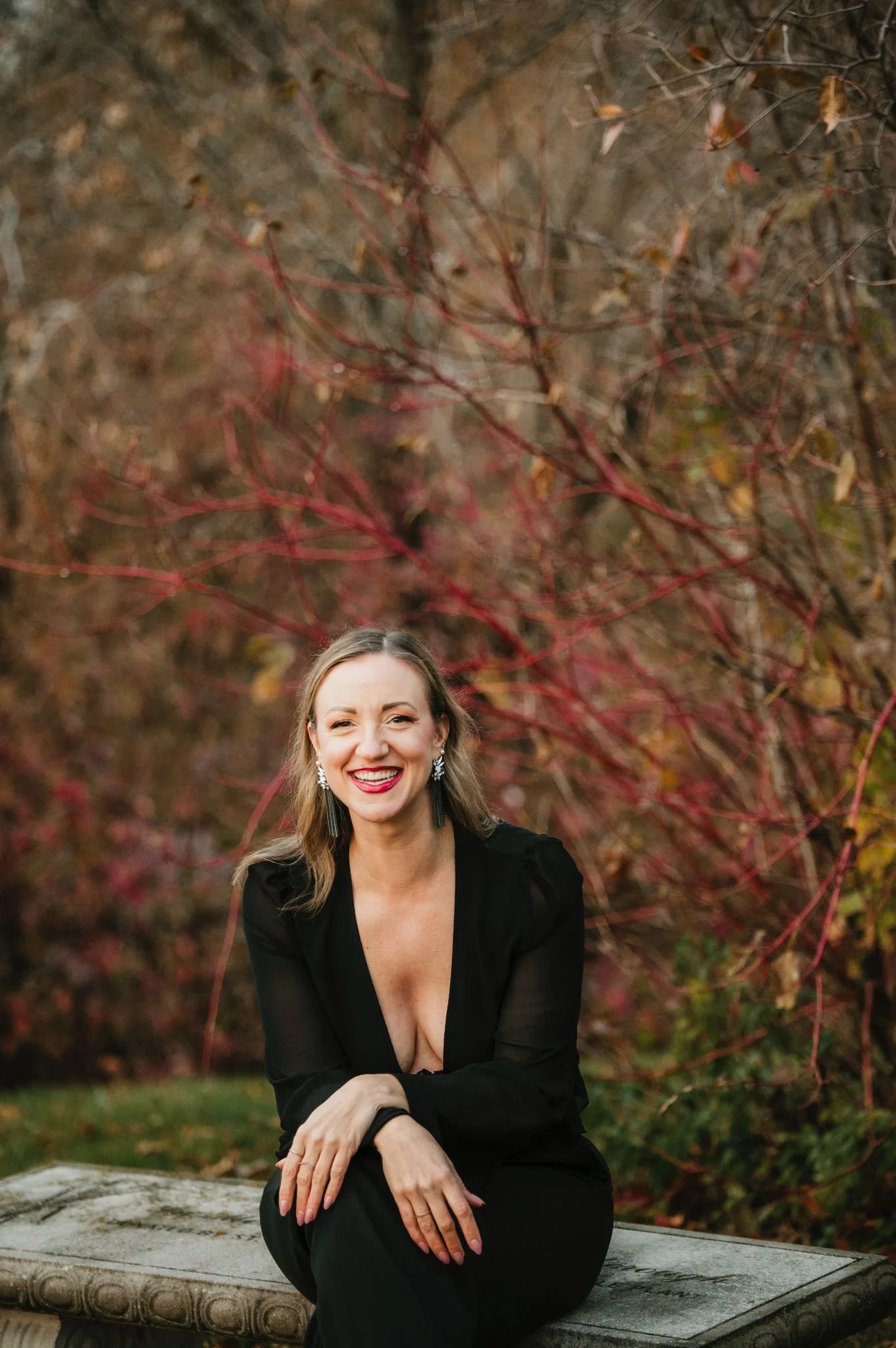From Survival to Soul-Led: Why I Created The Soul Work Space (A Founder’s Story)
I wasn’t sure if I had always been this way—or if the job made me this way.
That question looped like a siren at 3 a.m. On the outside I was the reliable one—capable, composed, “so strong.” Inside, I felt disconnected, like someone had turned the volume down on my life. I could list feelings but not feel them. Grief sat behind glass. Joy lived out of reach. I was both wired and weary, jaw clenched, breath shallow, doing what needed to be done.
When Protection Becomes a Prison
A decade as a Paramedic trained my body to survive: compartmentalize, move fast, keep going. Then came a workplace mental health injury and Post Traumatic Stress Disorder. At the same time, family ruptures surfaced and I left a relationship that deeply saddening and unfulfilling. It was the hardest work of my life—and yet, it was worth it.
Here’s a truth I didn’t have words for then: trauma makes us feel fragmented. It whispers, “You’re wrong. You’re broken. You’re messed up.” Instead of seeing clearly that something happened to us, we start believing there’s something wrong with us. That quiet shift— from what happened to what I must be—is devastating. It keeps us armoured and alone. My armour looked like competence, overfunctioning, numbing out so I wouldn’t feel—and then chasing intensity just to feel something. Addiction arrived as a coping strategy that worked… until it didn’t.
The Quiet Collapse You Couldn’t See
Everything collapsed all at once— loud, shattering, indisputable.
I had no solid ground to stand on.
The foundations of my life completely shattered: my identity of who I thought I was, close friendships I’ve had for years, a long term relationship, my career of over a decade, family that I thought were supportive, my dream future I was building— and the stories I told myself about who I had to be.
There were days I couldn’t get out of bed.
Days I cried until my ribs ached and eyes were so swollen. I reaching for substances to numb out while the tears kept coming anyway. I didn’t know who to turn to. Everything inside felt so heavy that I didn’t want to be the weighted anchor dragging anyone else down. I pulled back. Some people drifted. Some didn’t know how to sit with me in the sadness.
I fell into a dark hole with no ladder. When my body didn’t feel safe, no one felt safe. That’s what trauma does: it convinces you there’s something wrong with you instead of naming what happened to you. It fractures your sense of self, makes your own skin feel unfamiliar, and turns loneliness into armour—promising protection while quietly starving you of the connection you need to heal.
The Village That Held Me
I knew I couldn’t do this alone… I tried—white-knuckling my way through days, convincing myself solitude was strength. But we don’t heal in isolation; we heal in connection. My nervous system needed safe others to co-regulate with, people who could hold steady when I couldn’t. I needed a village.
My village looked imperfect and human—practitioners who allowed me to show up messy and exactly as I was, one or two trusted dear friends, a mentor who told the truth gently, these people were also choosing repair over perfection. They lent me their calm when mine went missing. They reminded me I wasn’t “wrong”—I was protecting. They sat with me in the dark without trying to flip on all the lights at once.
Support sounded like: “Come over.” and ‘It’s okay to cry.’ It also looked like a comforting bear hug, voice notes after hard days, and someone texting, “Just checking in.” It was boundaries that made room for safety, not distance. It was practitioners who moved at the speed of trust and friends who celebrated the tiniest wins—sleeping through the night and saying no without apology.
If you’re in your own dark hole, know this: asking for help isn’t a failure of strength; it’s a strategy for repair. Let people love you in practical ways. Let their regulated breath become a bridge to your own. Let the village hold the ladder while you climb.
The Slow, Honest Kind of Help
There isn’t a magic pill, a single session, or one ceremony that heals everything at once. Bodies don’t work that way. The nervous system needs time, slowness, and safety to unfurl. Healing is less like flipping a switch and more like **dimming the lights up—layer by layer—**until the room comes back into view.
So I stopped looking for “the thing” and turned toward the things that could meet all of me—consistently, gently, over time:
Body psychotherapy to unthaw my frozen body and emotions, to track sensation without abandoning myself.
Somatic trauma integration to unwind overworked survival patterns, to support my nervous system, to integrate fragmented parts of myself.
Embodied breathwork to complete stress cycles rather than override them, to reconnect with my internal wisdom and truth.
Craniosacral therapy to remember deep rest.
Energy work to reach what words could not.
It wasn’t linear. There were setbacks and tender victories: my body began to soften; my creativity started to return; my breath traveled lower; laughter showed up unannounced. Most importantly, I began to see the truth: I was never “wrong.” My nervous system was protecting me the best way it knew how. With skillful support, those protections could learn to stand down.
The Question That Changed Everything
As I pieced myself together across different rooms, a question kept tugging at me:
Why is healing so fragmented—mind here, body there, soul… somewhere else?
Where is the place I can bring all of me and be met fully?
That question birthed The Soul Work Space.
Why The Soul Work Space Exists
I created this Sanctuary so you don’t have to sew yourself back together in separate rooms—or mistake your brilliance for brokenness. At The Soul Work Space, every part of you has a seat at the table: your science and your spirit, your nervous system and your needs, your stories and the self you’re still becoming. We meet you with tenderness and truth. We honour your complexity. We move at the speed of safety. And we refuse to rush what is holy.
And we don’t just meet you—we become part of your village.
Come exactly as you are: clear or confused, raw or resilient, steady or shaking. We’ll meet you precisely where you are and walk from there, one honest step at a time. When you’ve forgotten your light, we’ll hold it for you—quietly, faithfully—until your hands remember the shape of it again.
Our work is remembering.
We help you remember your truth—not the roles, not the armouring, but the living essence beneath it all. We’ll sit with you as the noise settles so you can hear your own inner wisdom. We’ll invite your intuition back to the center of the room, help you trust the signals of your body, and practice choosing what aligns with your deepest yes.
This is how we hold you: with presence that doesn’t flinch, pacing that honours your system, and reminders that sound like, You’re not wrong. You’re returning. Together, we rebuild from the roots—until the light inside you isn’t something we’re holding for you, but something you freely carry, again.
What “All of You” Care Looks Like Here
Trauma-smart pacing: Capacity before catharsis; we move at the speed of trust.
Somatic literacy: Learn to read your body’s signals and respond with care.
Integrated methods: Talk, touch (when appropriate), movement, breath, and energy—woven, not siloed.
Relational safety: Attuned connection as medicine.
Soul alignment: Beyond symptom relief, we orient to authenticity, meaning, and a life you can actually inhabit.
The Return of Everyday Joy
One of the first signs of coming back to myself was dance.
Not a studio, not a stage—just my little apartment, my lovely plants and a song that caught my hips off guard. The kitchen became a dance floor again: wooden spoon as a microphone, bare feet on cool tile, laughter spilling over the countertops. I used to host kitchen dance parties for one; they came back like muscle memory, like my body whispering, See? We remember joy.
I began to feel safe around others—not all at once, but enough to try. Community grew, this time aligned: people who could meet me where I was, who cared more about my presence than performance. I practiced showing up vulnerably, and the miracle was that they held me—steady, attuned, unafraid of my tenderness. That’s how trust returned: not in grand gestures, but in a thousand consistent, gentle ones.
My body told the story before my words did.
There was more pep in my step on morning walks, a looseness in my shoulders, a swing in my arms. I caught myself smiling at strangers—not borrowing their smile to pass as okay, but offering mine because I actually was. The small, ordinary moments got their sparkle back: sunlight on a mug, a neighbor’s hello, the first chords of a favorite song.
This is what healing looks like in real life: not just surviving, not just managing, but moving, laughing, belonging—and dancing in the kitchen because your body finally trusts the floor again.
**Want a glimpse of that aliveness? Come watch me dancing around my little apartment—just me and the plants—on Instagram. Consider it your invitation to sway with us for a minute.
If You See Yourself in My Story
You are not broken—you are brilliantly protected.
Those feelings of fragmented or “wrong” are messages, not verdicts; signals from a nervous system that learned to keep you safe when the world didn’t.
With the right support, your protection becomes permission—and permission cracks the window for aliveness to breeze back in.
Aliveness feels like:
A quiet yes when you wake.
Space between what hits and how you choose.
Feet that find the ground before your mind finds the spiral.
A chest that holds warmth without mistaking it for danger.
Reaching out first—and trusting you’ll be met.
Saying no and feeling more whole, not less loved.
Curiosity returning where dread used to live.
Rest that actually rests you.
The urge to make something—call a friend, cook a meal, plan a little dream—because there’s energy to spare.
That’s aliveness: the steady hum inside you saying, I’m here. I’m ready. Let’s thrive.
This is the shift: to soften without slipping, to feel without flooding, to belong—in your body, in your relationships, in your days.
If something in you is whispering this is me, trust that. Take the next gentlest step: reach for a steady hand, let yourself be met, and begin practicing a life where your wholeness isn’t a performance—it’s your homecoming and your spark.
Next Steps
Curious if this approach fits? Book a free gentle consult and we’ll map a pace your system can trust.
Not ready to talk? Join our newsletter for somatic tips, reflections, and event updates.
We don’t fix the self that armoured up; we befriend it—until it trusts us enough to lay the armour down.


